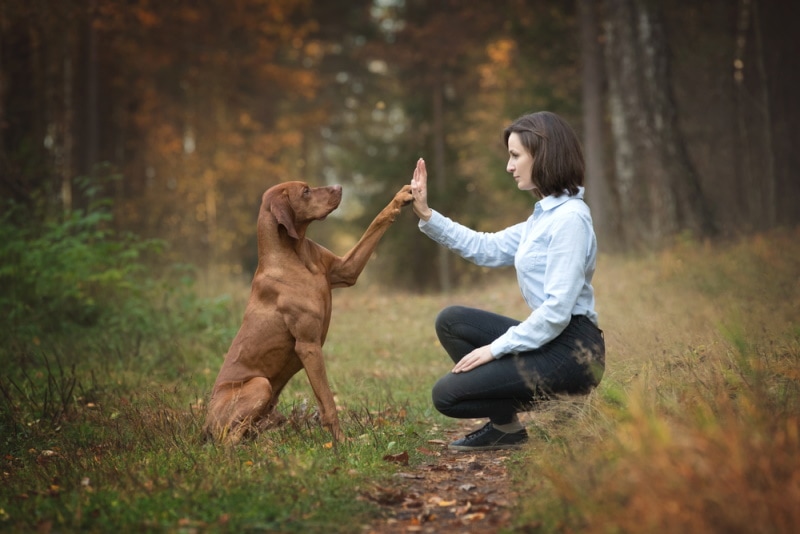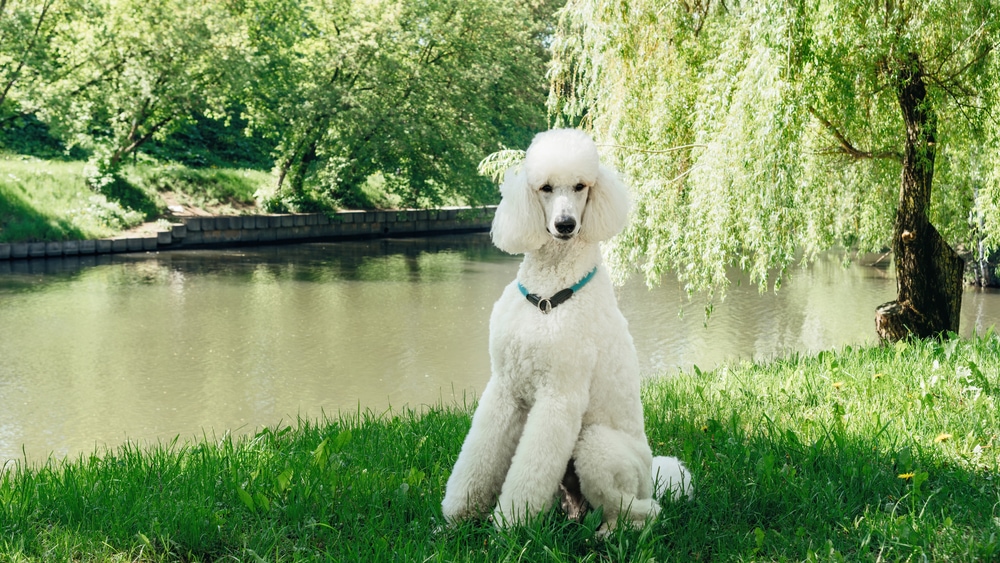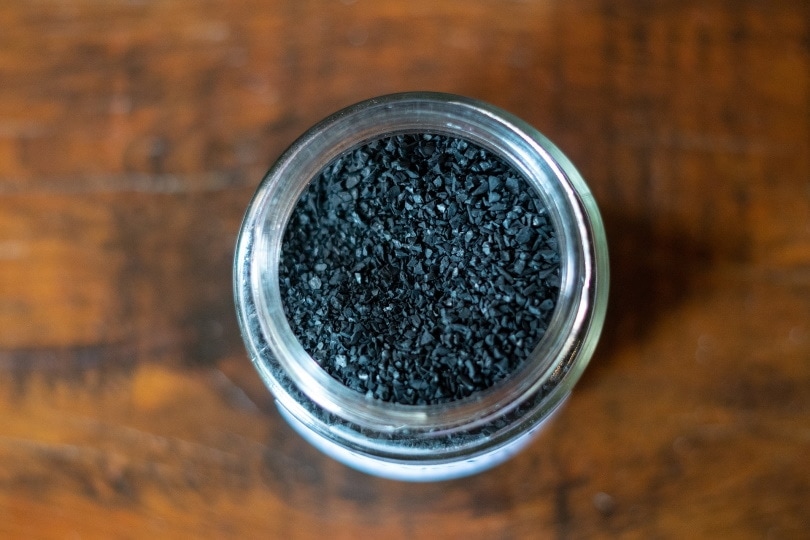Is a Vizsla Hypoallergenic? Vet Approved Facts & Tips

Updated on

A Vizsla is an intelligent, loyal, and loving breed of dog. As a result, they are becoming increasingly popular companion pets. But many potential owners wonder if they are hypoallergenic. This question is especially relevant for people with allergies or asthma that may be triggered by pet dander and hair.
The answer to this question depends on the owner’s individual needs. Generally speaking, Vizslas shed very little fur and produce minimal dander in comparison to other breeds of dogs. This is helpful. Therefore, those who suffer from mild allergies may not have any issues owning one of these dogs as a pet. But there are no guarantees. Those with more severe allergies might want to consider another pet altogether due to the fact that no dog can be hypoallergenic to the fullest extent.
So, it’s important for prospective owners to research all aspects of the Vizsla breed thoroughly before committing to bringing one home.
What Does Hypoallergenic Mean?
First of all, let’s define hypoallergenic. It basically means a breed of dog that is less likely to cause an allergic reaction in humans. Unfortunately, there is no such thing as a completely hypoallergenic dog. All dogs shed dander, which is what causes allergies in humans. However, some breeds are known to shed less and therefore potentially cause fewer allergies. So, the question remains, is a Vizsla completely hypoallergenic?
The answer is no. Vizslas have a short, smooth coat that sheds minimally. However, they are not 100% hypoallergenic. The American Kennel Club (AKC) states that Vizslas have a low dander level, but this does not mean they are allergy-friendly.

What Causes Dog Allergies in Humans?
Allergies are caused by a protein found in dog dander, saliva, and urine. The most common proteins are CAN-f1 and CAN-f2. The bodies of allergic people perceive these proteins as a threat. These allergens can be inhaled or come into contact with the skin and cause an allergic reaction. This usually comes on pretty quickly. Dog allergies in humans are a potentially serious condition that can cause uncomfortable and sometimes dangerous symptoms. The more time you spend in the dog’s environment, the worse it gets. Allergens tend to accumulate on upholstery, carpeting, and other surfaces. Anywhere the dog has been may have a build-up of allergens.
These proteins enter the air when a pet licks itself or sheds their fur. Just being in the same space is triggering. Symptoms of allergic reactions include itchy eyes, sneezing, wheezing, coughing, and even asthma attacks if exposure is prolonged.

What Breeds Are Hypoallergenic?
When it comes to pet allergies, not all dogs are created equal. Heavy shedders can make things worse. Although no dog breeds are fully hypoallergenic, many people are surprised to find out that some breeds can be suitable for people with mild allergies. This is because they don’t produce as much dander and saliva as other breeds and so cause fewer allergic reactions. Short-coated dogs may also not build up as much dander, saliva or urine in their hair. These lower-shedding dog breeds may be perfect for those with allergies or asthma who want a furry companion. But you need to test out spending time with them.
Commonly marketed as being “hypoallergenic” these dog breeds include the Poodle, Schnauzer, Bichon Frise, Chinese Crested, Maltese, and Kerry Blue Terrier. These small-to-medium-sized dogs usually have curly coats that shed less than other breeds and produce minimal dander when groomed regularly.

What Can You Do If You’re Allergic to Dogs but Still Want One?
Having a pet can be a great thing, but if you have allergies to dogs, you may think it’s impossible to have one. Don’t despair. There are several steps you can take to keep your home comfortable and reduce allergen load while still enjoying the companionship of a canine friend.
It is important to consult with your allergist or doctor before starting to look at homing a pet.
There are no guarantees—but there are mitigations. The first step is to choose the right dog for you as an individual. After considering all your options for exercise needs and so forth go and spend some time with the dog you hope to bring home. This should allow you to determine if this particular dog causes a flare-up in your symptoms.
Another option is having your dog groomed regularly so that its fur stays dry and dirt-free, which helps decrease allergens in the house as grooming takes these proteins out of your dog’s fur. Using HEPA filters in air conditioners and vacuum cleaners can help. Damp dust surfaces regularly and have professional carpet cleaning. Additionally, you can take allergy medicine or get allergy shots to reduce your symptoms. We strongly recommend discussing all your options with your doctor before bringing a pet home.

Conclusion
In conclusion, a Vizsla is not hypoallergenic. While they do shed minimally and have a low dander level, they can still cause allergies in some people. If you’re allergic to dogs but still want one, consider spending time with different breeds, consulting with your doctor and taking allergy medication. Remember, owning a dog is a big responsibility—and it’s not fair to the dog to get one and then return them later—so be sure to do your research before bringing one home.
Featured Image Credit: Ferenc Novák, Pixabay











